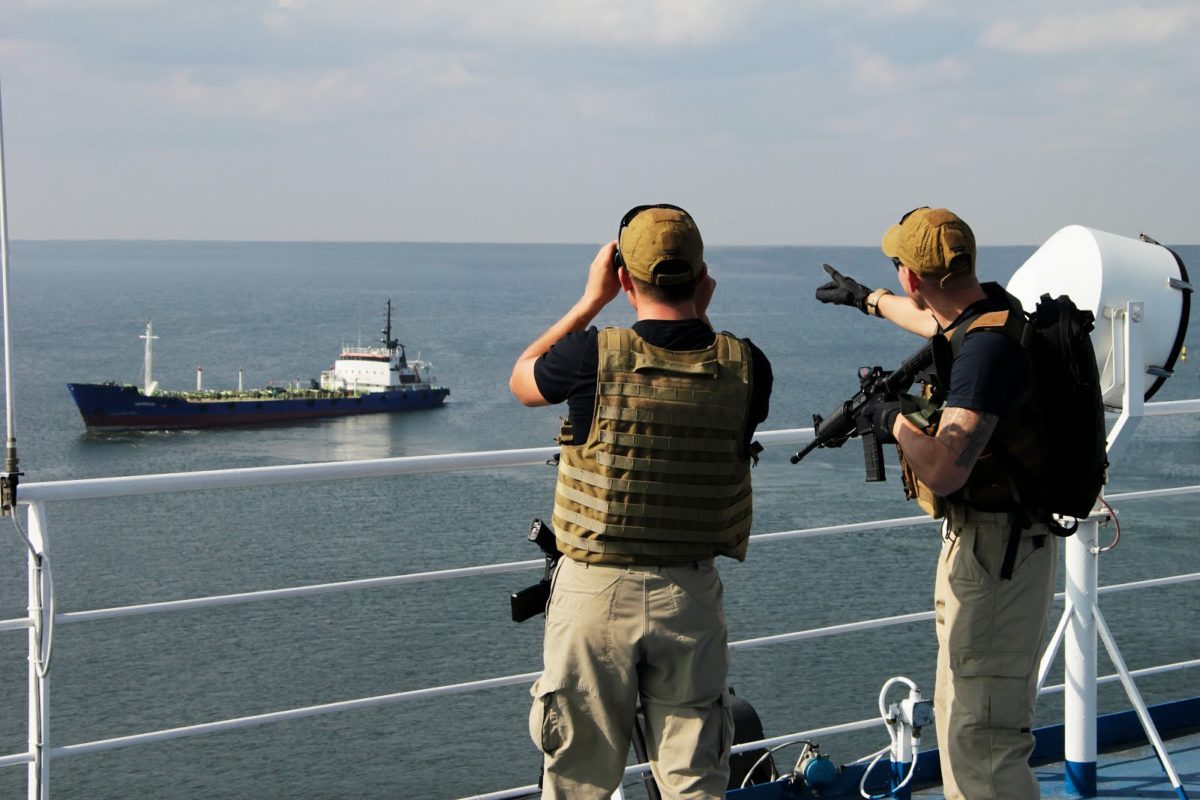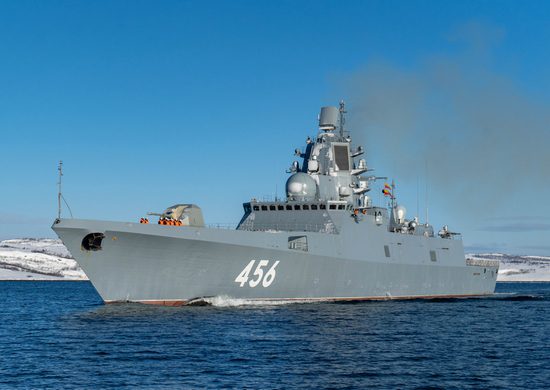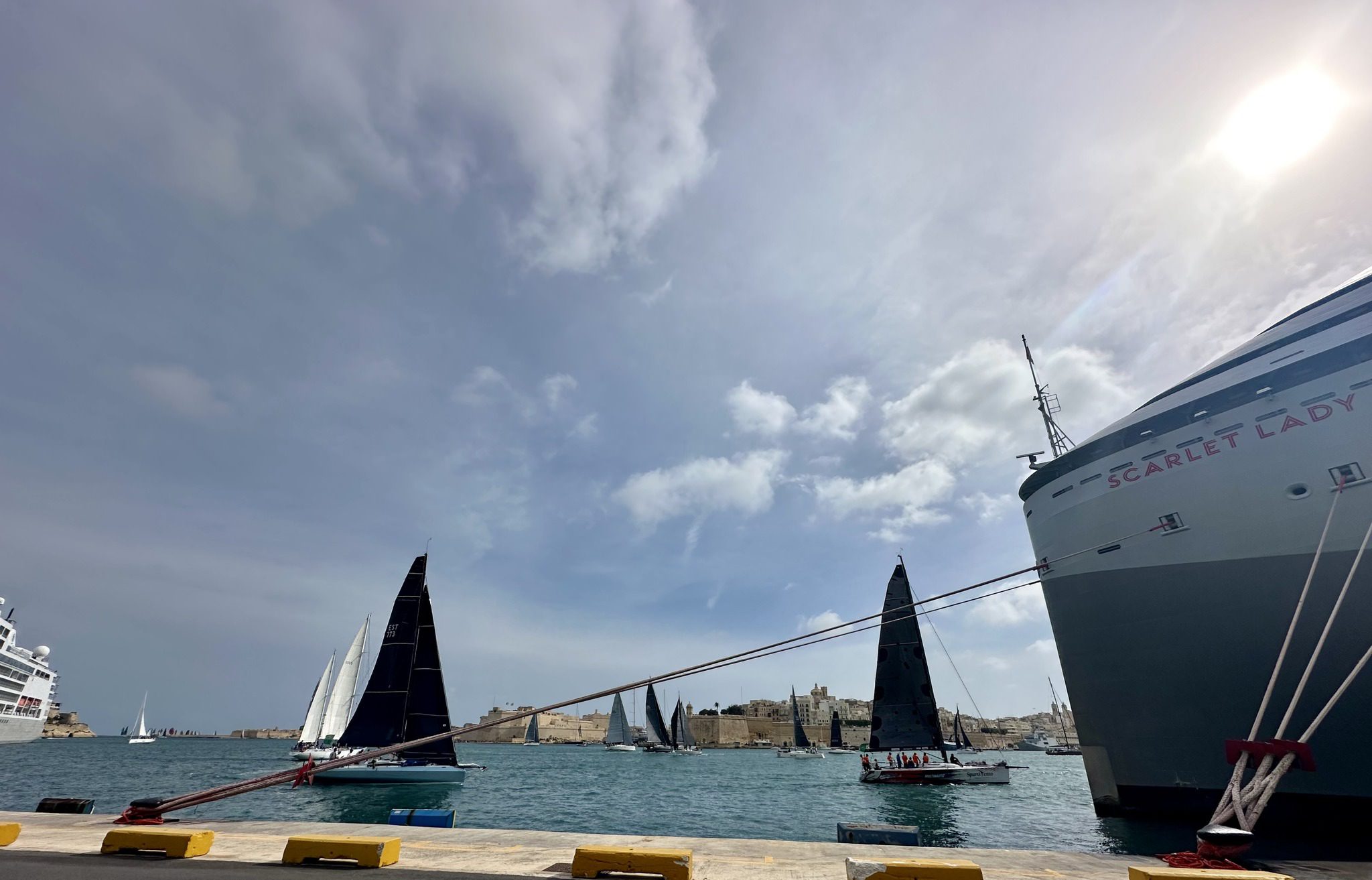Image (c) Aburgus
By Rene Toomse, CEO of Aburgus
Maritime Security is not a rocket science. To conduct the actual work one just needs a number of trustworthy men, some money and a bit of creativity. The whole industry can be roughly explained within the three simultaneous lines of operations: logistics, marketing and manpower. They all have the logic, but also the pain.
In the article I will discuss on types of the service providers, the logistics that embeds huge amount of irrationality and touch base with intelligence, all the crazy licensing, certifications, approvals and also touch on false image marketing.
Here will be no names of the companies or persons other than referring to public statements or data. The idea is not to condemn anyone or promote my company, but simply and openly bring out the essence of the industry that is far simpler but meanwhile tremendously complex and stressful that non-industry people could imagine. And let me put this up front here – the real stress and fight is not caused by the pirates. They are likely the easiest part in the whole “game.”
Defining security – imagination or reality?
What is security? Is it a perception or something touchable? What is the standard for security? There are no clear answers. Many theories explain security as this is someone’s concern, being a person, company or State, feeling safe (perception) and being saved from the actual harm (real). Many say that deterrence is the highest level of security. By a good deterrence one creates the perception to adversary that the security provider is capable of providing the real security and this will most likely hurt the adversary. A rational person evaluates the risk-reward and if the balances are not to his favor, he will not attack. The deterrence has worked.
The same can be explained in maritime security.
The providers who emphasize on deterrence are likely less needed to present their real capabilities to provide the security, which is fight the attacking pirates. A vessel, wrapped up with razor wire with visually armed men on board, is not an attractive target. The defender of a vessel has always held the so-called tactical high ground that puts him him or her in a better tactical position over multiple attackers from the sea.
Here the security starts and presents a scenario to the potential pirate that by attacking this vessel, he will likely end up bleeding to death due bullet holes while tangling within razor wire. Clearly not a soft target, or a good visual for the would-be pirate.
Another level is warning shots.
Some pirates will test to see if what they perceive as a hard target, is in fact ready to defend itself. Maybe the guards are dummies or they have mock weapons? Pirates then come closer to provoke and if no sign of real harm to them is presented, they attack. The deterrence has failed, perception diminished.
Warning shots however, will insure that the perception is backed up by real harm in case they are willing to proceed. Most of the time they will drop the intent, change their course and will wait for another vessel to test her in the same way.
In summary we can say that security is mainly a perception that needs to be backed by real means in case the deterrence does not work.
Service providers – the good, bad and ugly
No one knows exactly how many actual service providers are out there today. Let’s define the “service provider” as groups who conduct or organize security services on vessels operating in the areas where pirate attacks are likely.
From service providers we can recognize the few different emerging groups:
Full Style Providers – the ones who run all the previously mentioned lines by themselves. They have acquired most of the industry recognized memberships (ICoC, SAMI), certificates (ISO 9001 and others), Flag State licenses (Panama, Cyprus etc.) and by industry demanded Insurances (Public Liability, Professional Indemnity and Personal Accident). In addition, they have procured the weapons legally. In short, these are the companies who will conduct the full service from A-Z by following the IMO and other governmental and industry-set demands.
There are also small and large companies in this field. Some of the companies are cooperating and some are trying to push the competitors overboard. There are very few who trust each other and truly cooperate.
They are usually found within SAMI’s list of 181 companies as of June 2013, but not all the listed will count as such companies. Full Style Providers are trying to run the operations as independently they can to save the maximum possible profit that is not easy to collect over the huge expenses on all the formalities and operational fees.
Half Baked Providers – they are either on the way to the Full Style or have decided to operate in the middle zone for different reasons. Mostly they are lacking of weapons that are not easy to procure for different reasons and would produce high costs of sustaining them. Some will not buy the insurances. The combination of renting weapons, insurance coverage and a custodian serves them well. They are relying heavily on a partner’s assets availability. Therefore, sometimes they might not be able to provide the service within short notice. Also, their expenses depend on partner’s rates to rent weapons and be the proper custodian of them.
Brokers – there are companies who fully or mainly sell to the other companies. They have heavy focus on marketing, but usually possess no teams, weapons, licenses, certificates or insurances. They act as connectors between real providers and collect their revenues either by so-called union fees and percentage or added fees to the providers demands.
Some of them are honest and are pursuing long-term mutually beneficial relationships, but some are simply thieves who will stop at nothing to maximize their profits on short terms gains while sacrificing long-term sustainability. Directly they are not responsible for anything and all the burden lays on the actual provider.
Illegals – Companies or bands of brotherhoods who are missing a majority of the prerequisites or not following best management practices demanded by the industry. They usually have the manpower and channels to acquire the weapons from black market and do the actual job at a very low cost using inexpensive manpower and cheap weapons.
In many cases, the weapons are usually for one-time use and will go over board before arriving in port. There are also some vessels companies who will hide the weapons well within the vessel and issue them out for the next transit, usually to the same company. This saves significant costs, but if discovered by port authorities, the ship could charged with possessing illegal weapons or missing backup of insurances in case of security-related incidents.
Of course there are variations and mix of even the types described above. However, those are the most commonly distinguishing company types in this industry.
The actual providers can also be divided as large and small companies.
Large companies generally have a more robust logistics chain, and even a few of them have their own floating armories to reduce their costs on agency and governmental armory services fees in a particular region. To sustain them however, they need to have a great volume of transits as the fixed costs are relevantly high. The larger the company, the larger the supporting staff, but also the threat to lose the flexibility to meet the particular needs of the client in short term.
Smaller companies in turn, are sometimes more likely to provide more personally-catered services to a particular client. There is often a perception that smaller ones cannot provide the solutions that require the fast and problem-free embarking/disembarking, but this is not necessarily the case.
Here the personal touch and truly customized solutions of the top management by themselves can make a smaller company a more attractive option than a large one.
Also, in times of fewer transits, the smaller companies are about to suffer and frustrate less as they have no huge fixed costs to sustain. They can easily go to idle mode for some time and still be ready to send out a high quality teams once requested. A perception that companies who do less than certain number of transits per month will not survive in current market situation, is not necessarily true. Also they can have a very swift logistics as they approach their agents more personally then large ones can allow for themselves. Personal approach is and will stay a great enabler in this ever-changing environment of regulations from every direction.
There is also an overall sense that as larger companies are even advising all the different licenses to force the small companies out of the market.
Smaller ones simply do not possess enough assets to pay all the fees despite the fact the actual quality of their operations may easily exceed the larger company’s services.
There is no mercy in this business. Adopt or die. However, once the small companies are gone then shipowners will likely have only “Walmart” shopping, standardized solutions, and perhaps open the door to more illegal operators.
Aburgus is an Estonian (EU) Risk Management Company designed to mitigate and solve the issues that our clients may face in today’s unstable environments.
Edited by Rob Almeida
Unlock Exclusive Insights Today!
Join the gCaptain Club for curated content, insider opinions, and vibrant community discussions.

 Join The Club
Join The Club











